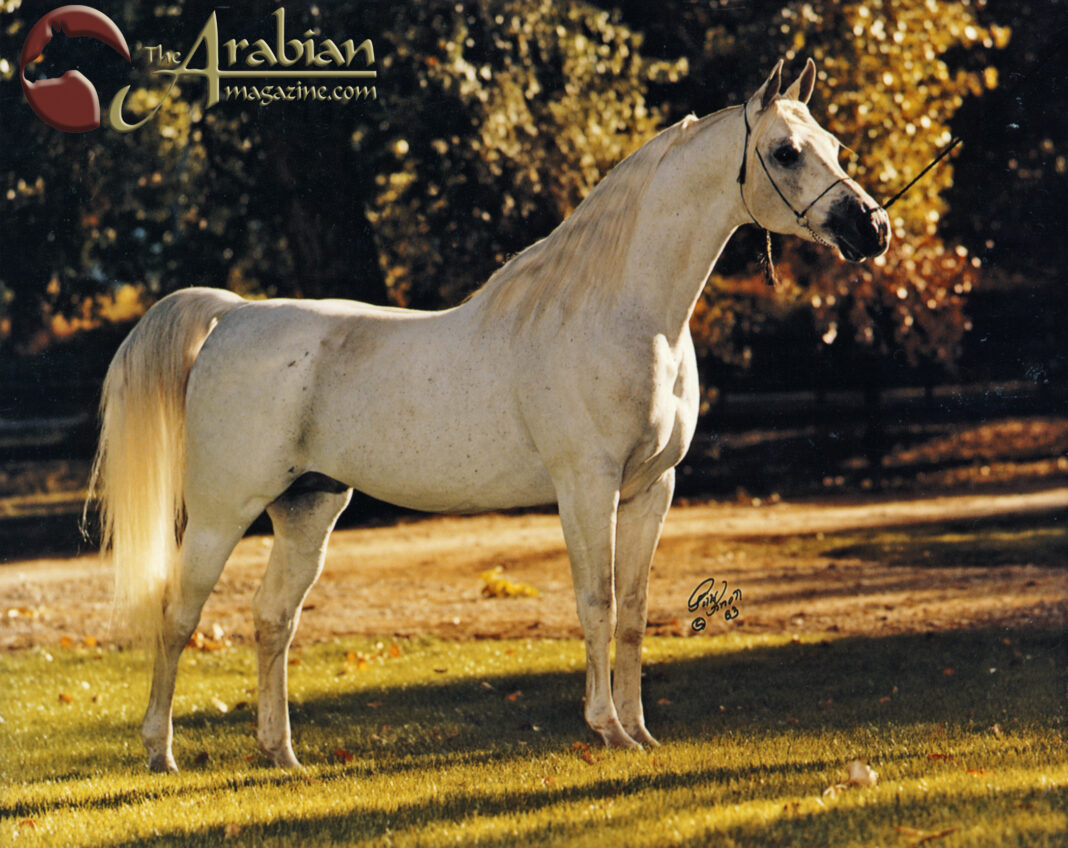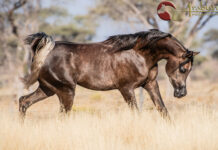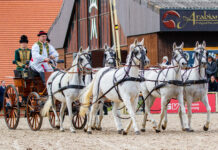The story of Gleannloch Farms in the USA dates back to the 1950s, when it was known as the premier source for Egyptian Arabian horses. In this wonderful, historical article, Steve Diamond tells the history of this famed stud for a new generation of Egyptian breeders to enjoy. Originally run in The Arabian Magazine in March 2008, it was shared in The Arabian Breeders’ Magazine in summer 2023 in tribute to Rhita McNair, who passed away that May. Click here for part one.
In 1965, 13 horses came to Gleannloch from Egypt with Morafic being the king. He was everything Doug and Margaret had dreamed of. They formulated the idea to cross Morafic not only on El Sareei/Shahloul blood, but to use daughters of Anter (Hamdan x Obeya), Sameh (El Moez x Sameera), and Alaa el Din (Nazeer x Kateefa). The Marshall’s also wanted to linebreed to Nazeer as they liked the type. Doug was a very devout follower of the teachings of Carl Raswan. In fact, he would even make secretaries change the spelling of the strains to Raswan’s spellings on all their hand-typed pedigrees.
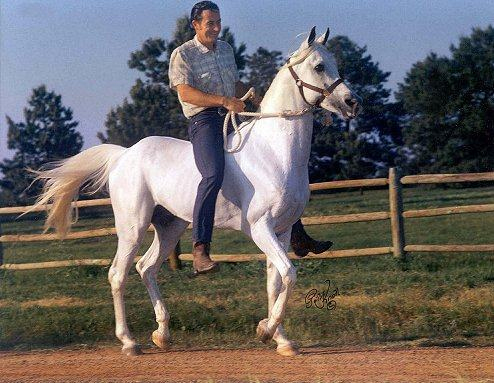
As Gleannloch’s direction moved towards the ‘new’ Egyptians, the Marshall’s decided to disperse their old breeding programme and focus on their new direction. In 1968, they held the Sale of Champions, selling all of their non-Egyptian horses. Surf topped the sale at $15,000, an unheard of price back then. It was a bittersweet transition, but one that proved to be more endearing and fruitful in the end.
Gleannloch surged on with their new imports. Bint Maisa el Saghira won from coast to coast in halter, English pleasure, side saddle and park and she was named US Top Ten in halter, English pleasure, and park. At the same time they were showing her, they met a young couple named Don and Judi Forbis who had also imported some horses from Egypt. Don was showing his young Nazeer son Ansata Ibn Halima (ex Halima) in a halter class in Dallas during the National Show. The McNair’s and the Marshall’s were quite taken with this young stallion’s beauty. As the Forbis’s were still living overseas, they suggested that the Marshall’s lease him and show him. That arrangement seemed to work out well for both parties as Tom showed Ansata Ibn Halima to Top Ten Stallion in 1966, 1967 and 1969. They produced many good foals by ‘Ib’ during that time. Of particular note are El Hilal (ex Bint Nefisaa), Dahmah Shawania (ex Bint Maisa el Saghira), El Hadyii (ex Samaraa), Samim (ex Salomy), and Hossny (ex Sanaaa).
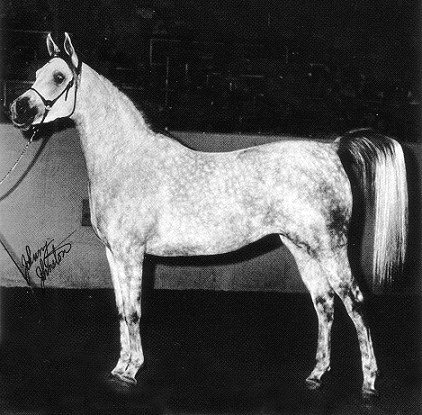
The American Arabian show scene was now being taken over by the Egyptians. In 1967, the Morafic daughter Nahlah (ex Mohga) was named US Reserve National Champion Mare. She later won a total of six Top Tens in halter, English pleasure, western pleasure, and native costume. She was America’s sweetheart and the pride of Gleannloch. Other mares followed such as 1968 Top Ten Mare Fawkia (Sameh x Mamlouka) and 1969 Top Ten Mare Romanaa II (Sameh x Nazeera).
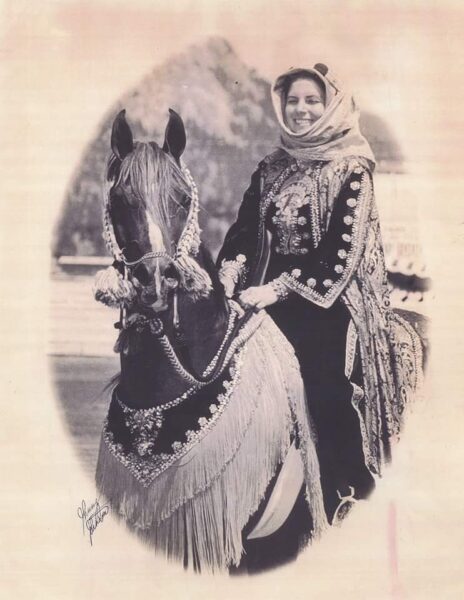
But 1971 was the year that Gleannloch and the other Egyptian breeders really blew the roof off the Arabian showing world. They won the US National Champion Futurity Colt with Dalul (Morafic x Dawlat), the US National Champion Futurity Mare with Il Muna (Morafic x Bint Mona), Reserve National Champion Futurity Mare with Muzrafaa (Morafic x Safaa), Top Ten Mares with Il Muna (Morafic x Bint Mona) and Shiaa (Alaa el Din x Berlanty), and US National Champion Western Pleasure with Nihal (Anter x Neamat), who was also named Top Ten English Pleasure. They also won US National Champion Native Costume with Faleh (Alaa el Din x Farasha) and Top Ten Park Horse with a three-year-old colt and soon to be the king of the ring named Sakr (Sultan x Enayet). Sakr dominated the park and native costume events for 10 years straight, winning five National Championships, three reserves and 13 Top Tens. The triumphant cry of ‘Sic ‘em Sakr!’ will be etched into the analogues of history and minds of Arabian enthusiasts forever.
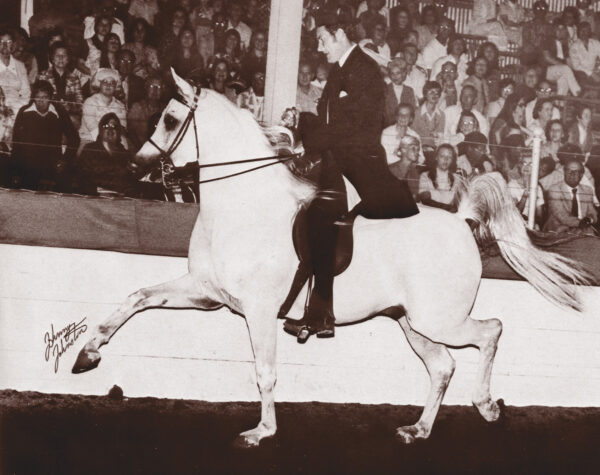
By this time, Gleannloch had a large percentage of Nazeer-bred horses. They felt a need for an outcross stallion and the Sameh son Ibn Hafiza fitted the bill. His dam was the double Hamdan-bred mare Hafiza (Hamdan x Mahfouza) and also the dam of one of the most exquisite stallions ever born in Egypt, El Araby by Morafic. The Marshall’s felt that this would be a good combination on the Morafic daughters as Morafic had already been successful on the Sameh daughters. They also brought in the Gassir son, Zaghloul, out of the double Hamdan-mare, Gharbawia (Hamdan x Ghorra). Doug felt that Hamdan and his full brother Shahloul were very important in mixing with the Nazeer blood; the breeding philosophy at this point on the farm was ¾ Nazeer blood and ¼ outcross.
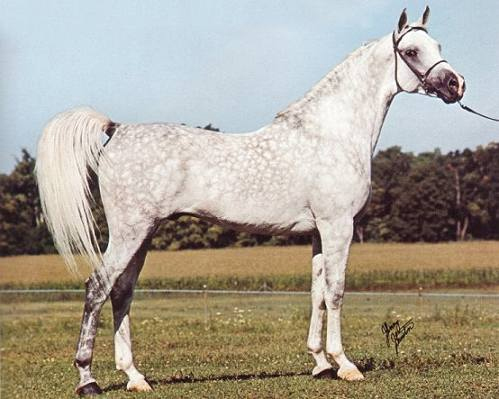
Throughout the 1970s and 1980s, Gleannloch’s horses seemed to dominate the show-ring. They brought many new people into the industry and served as a fountainhead of foundation stock for American breeders interested in straight Egyptian bloodstock. During this time, they sold such greats as the Morafic sons Shaikh al Badi (ex Bint Maisa el Saghira), The Egyptian Prince (ex Bint Mona), Dalul (ex Dawlat), Al Nimr++ (ex Hekmat), Mosry+++ (ex Sanaaa), Al Nishan (ex Eman), Al Metrabbi++ (ex Sammara), Khofo (ex Nabilahh), Ahir (ex Deenaa), Shah Nishan (ex Kahramana), the Ansata Ibn Halima sons El Hilal (ex Bint Nefisaa), Hossny (ex Sanaaa), Mohssen (ex Bint Mona), and Nabiel (Sakr x Magidaa), among many others. The Marshall’s were unselfish in sharing their blood with other breeders and giving them a good start in their breeding programmes.
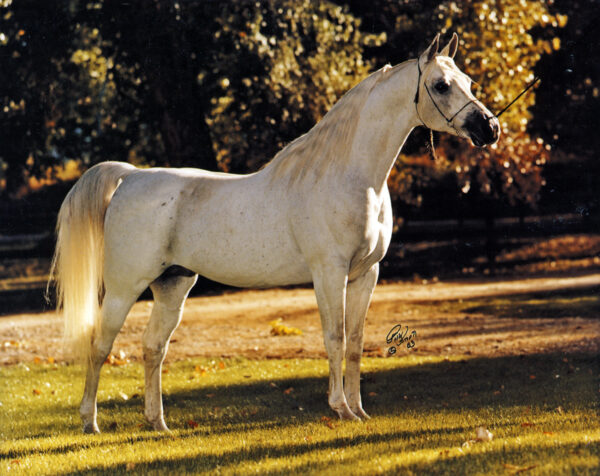
In 1973, tragedy struck. Morafic suddenly colicked and was taken to Texas A&M, but to no avail – they could not save him. This courageous horse fought to the end and literally died on his feet. To say the least, Doug and Margaret, as well as Tom and Rhita, were devastated. Here was the pinnacle of their programme as well as the horse of their dreams, and now he was gone. In that same year, there was a colt born to them by Morafic out of the exotic Anter daughter, Kahramana (ex Kamar). This colt displayed many of the dynamic traits of his sire and he was a prince soon to be king. He was named Ibn Morafic and in 1976, he was named US National Champion Futurity Stallion as well as later being named Canadian Top Ten Stallion and US Top Ten English Pleasure horse. He sired National Champions in both halter and performance. Another colt that came along that helped to fill the void was Rofann (Soufian x Bint Romanaa), a US Top Ten Futurity Colt and winner of numerous championships in halter, western pleasure and English pleasure.
In 1981 Gleannloch Farms moved their horses to Barksdale, Texas. There, Doug and Margaret retired and enjoyed the foals, and they built one of the most elaborate barns ever seen anywhere in the world. Towards the end of the 1980s, Gleannloch slowed down on showing and they sold many of their original imports and concentrated on the Morafic daughters and sons. They were very proud of their horses.
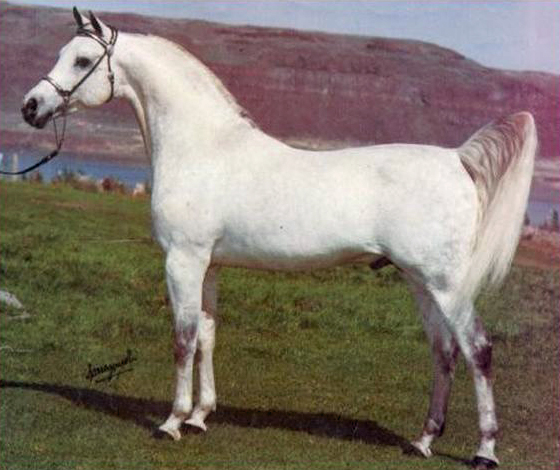
In 1992, Margaret Marshall was diagnosed with lung cancer and died. It was a very hard decision for Doug, but he dispersed all of the horses. He did not want to carry on without his Margaret. The horses were sold all over the world as buyers fought to get their hands on some of the world’s most precious blood. Doug died on 27 September 2007 at the age of 89 at his home on Christmas Island. He was laid to rest next to his wife, Margaret, at the ranch in Barksdale. Their grandson, Doug Marshall III, inherited the ranch. Hugh is the only living son of Doug and Margaret, and Carol Hochner Ray is the only surviving niece to Margaret. She was with me at the US Egyptian Event in 2006 when she bought the Morafic bronze for her Uncle Doug.
Today there are many breeders who have the Gleannloch blood in their herds. In all, Gleannloch imported over 60 horses from Egypt. They were founding members of The Pyramid Society and Doug served as the first president. They laughed and cried many tears over their horses and friendships they made along the way.
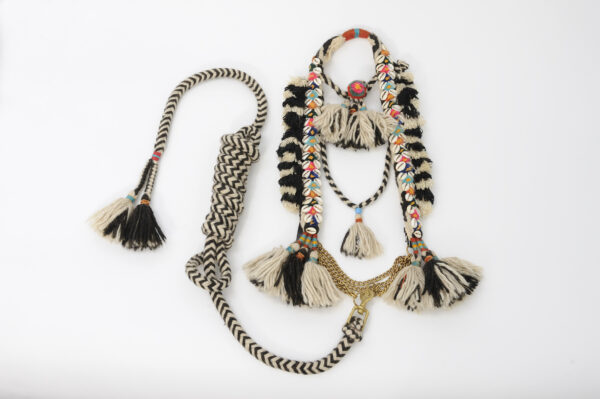
It is funny the roads that life takes us down: their first mare given to them by Dan Gainey was bred by Henry Babson. She, in turn, produced their first foal, Kahla, who was later sold at their dispersal and even later, was bred to the Ansata Ibn Halima son, El Hilal, whom the Marshall’s bred from one of their first imports, Bint Nefisaa, while Ansata Ibn Halima was on lease to them from Don and Judi. The resulting foal was named Kahlett who was in turn bred to the half-Egyptian stallion Jora Honey Ku (Joramir x Hatties Honey Ku) to produce the 1983 US National Champion Mare VP Kahlua. This seemed to bring things into a full circle.
The eye and foresight that the Marshall’s had was undeniable. The names of Morafic, Sakr+++, Ibn Hafiza, Soufian, Bint Maisa el Saghira, Romanaa II and Bint Mona, along with their sons and daughters, will live on in the pedigrees of some of the greatest Arabian horses in the world.


